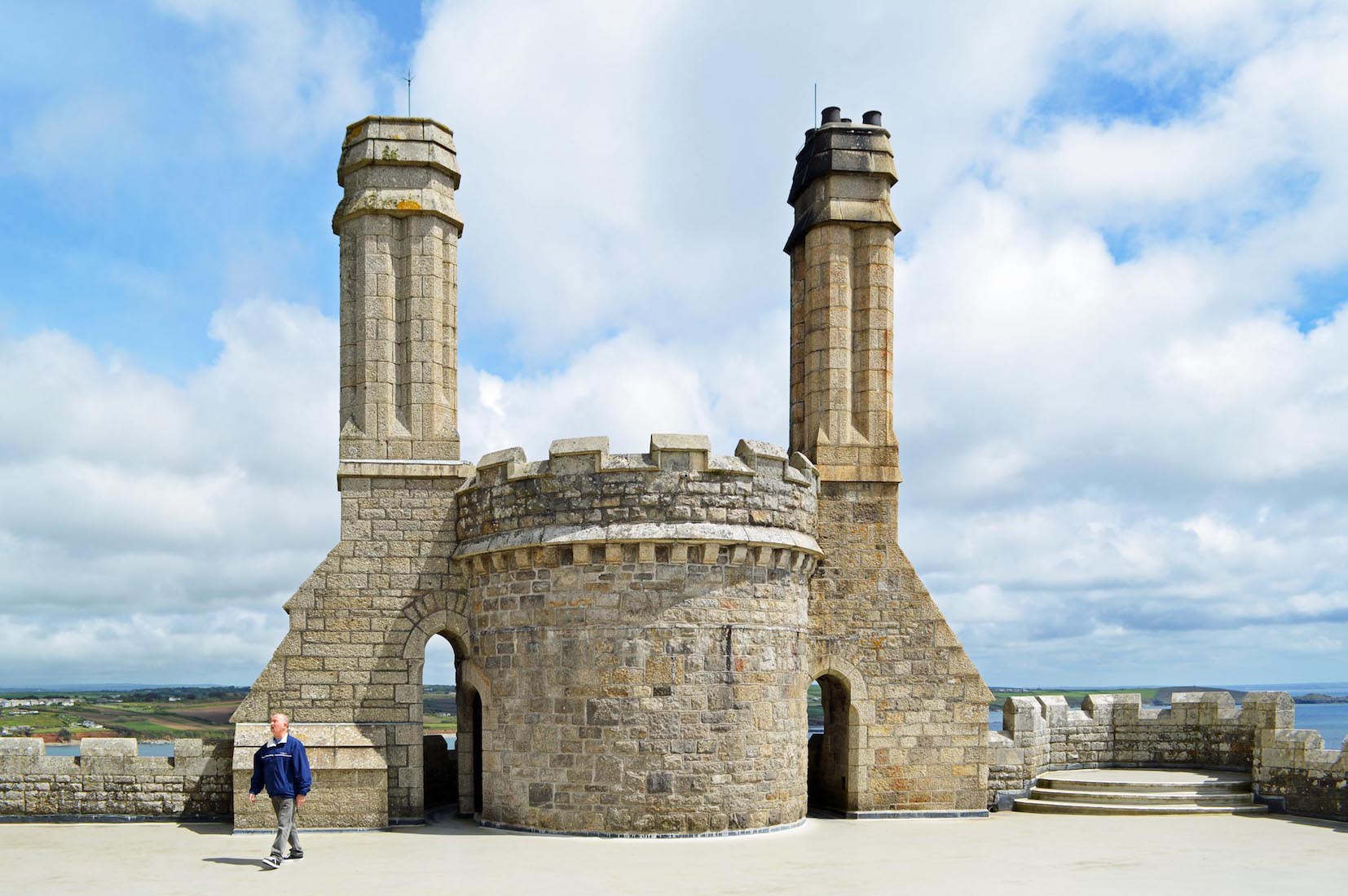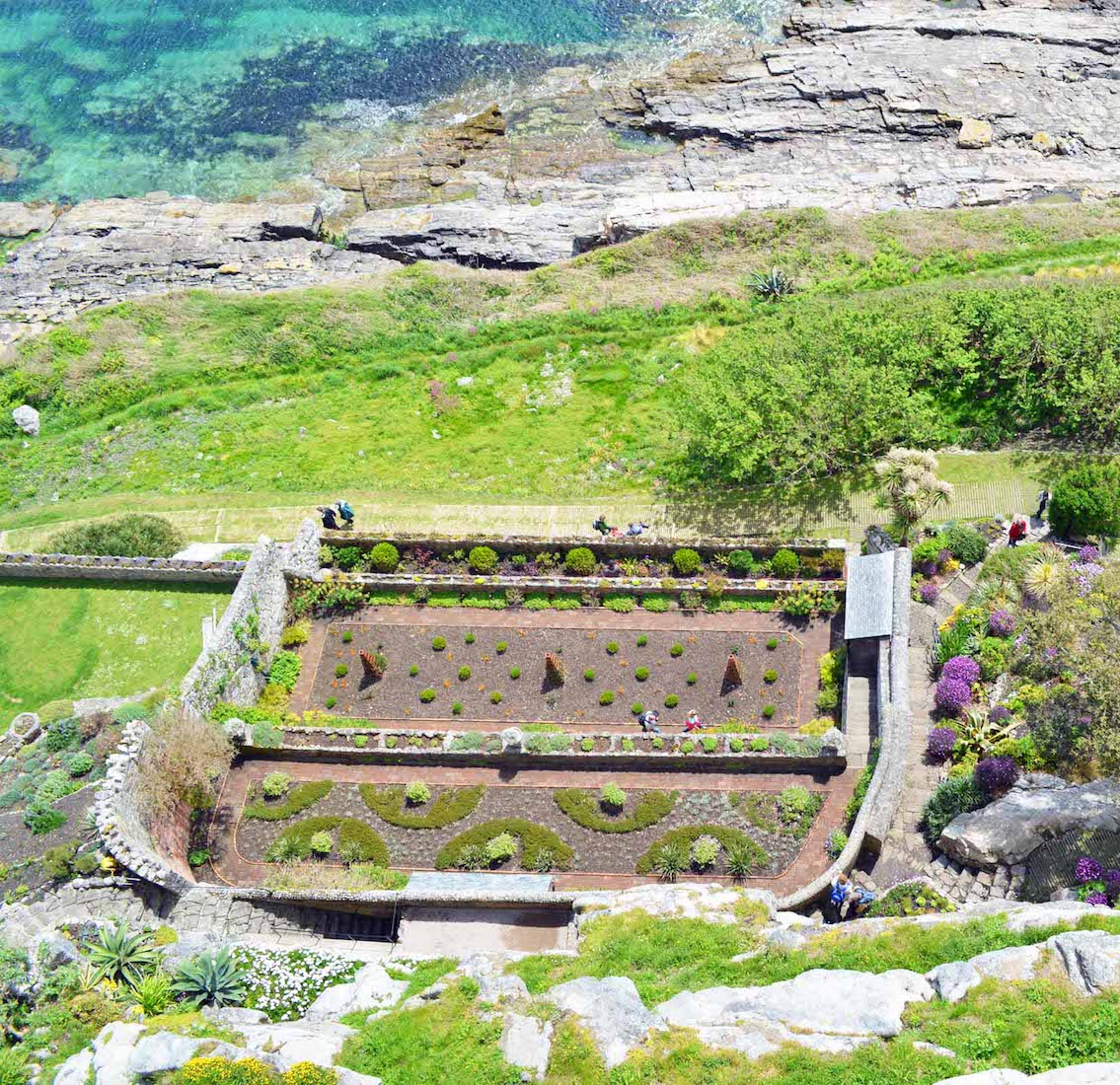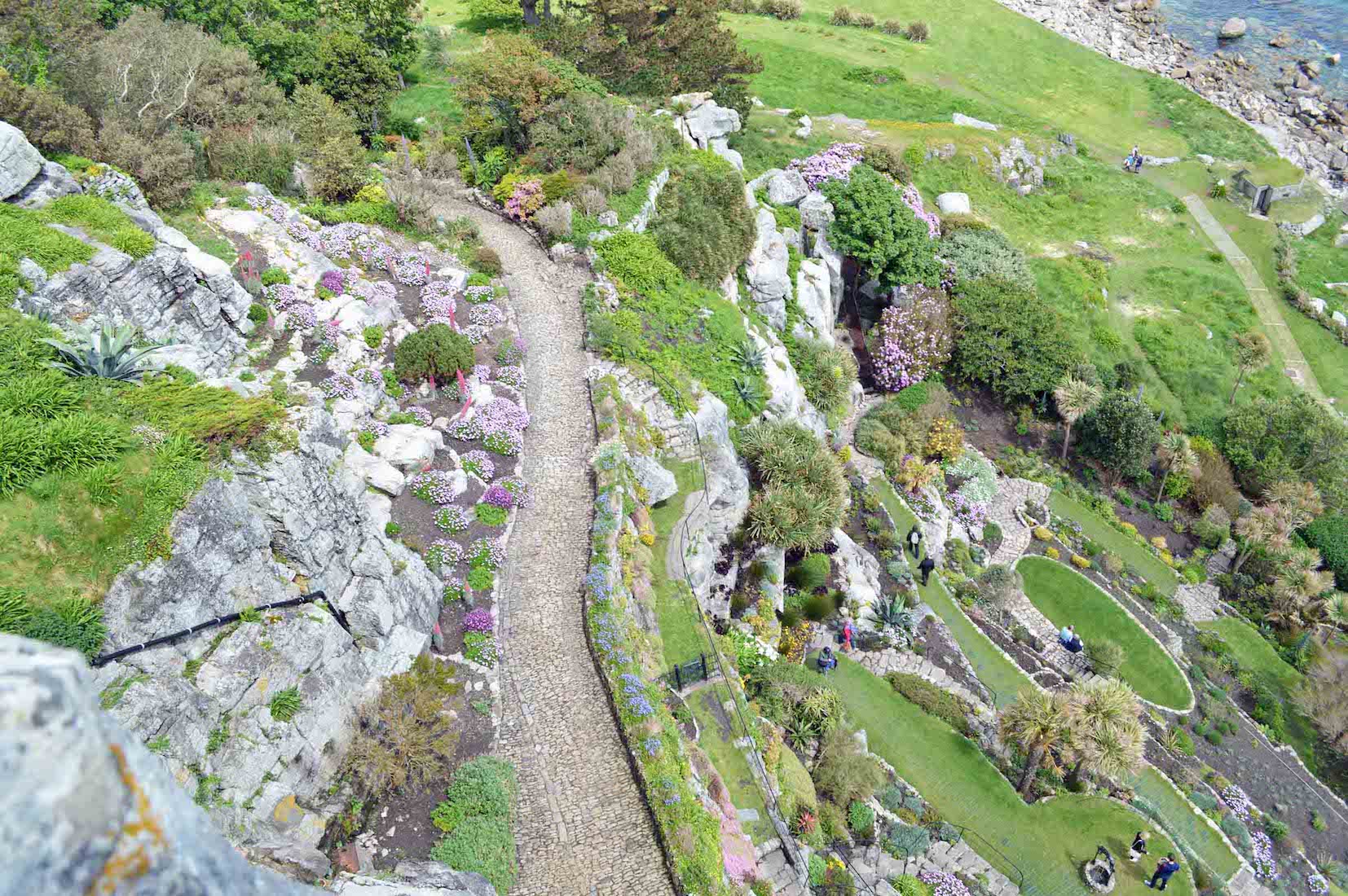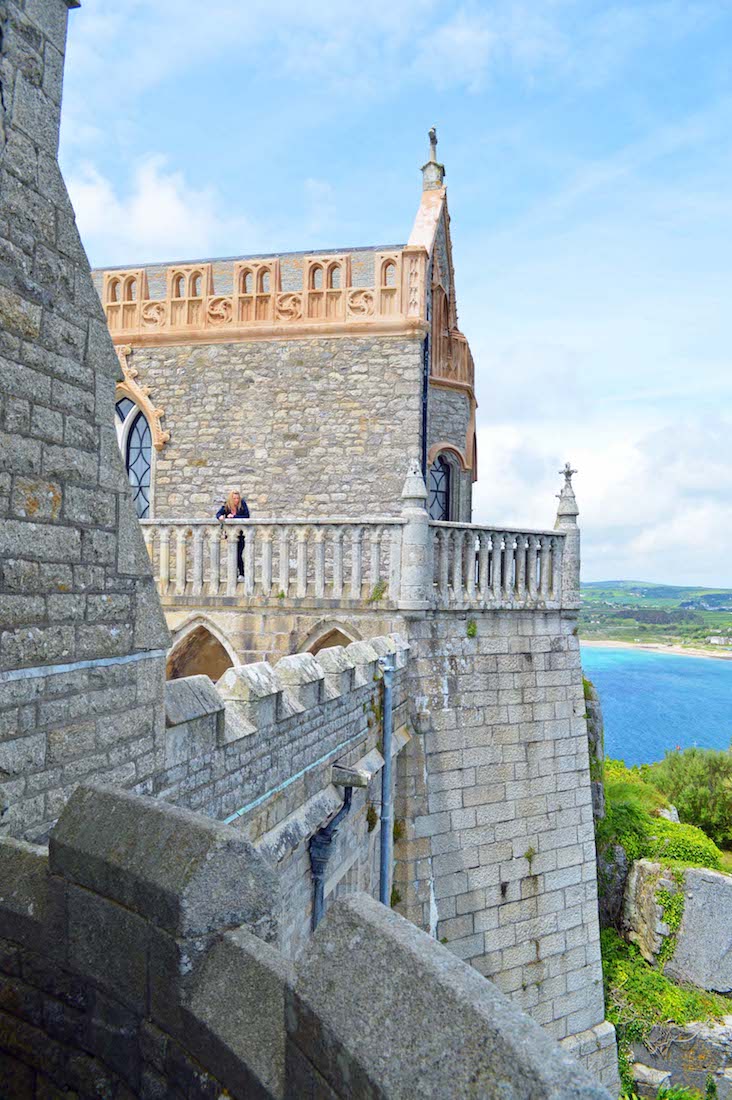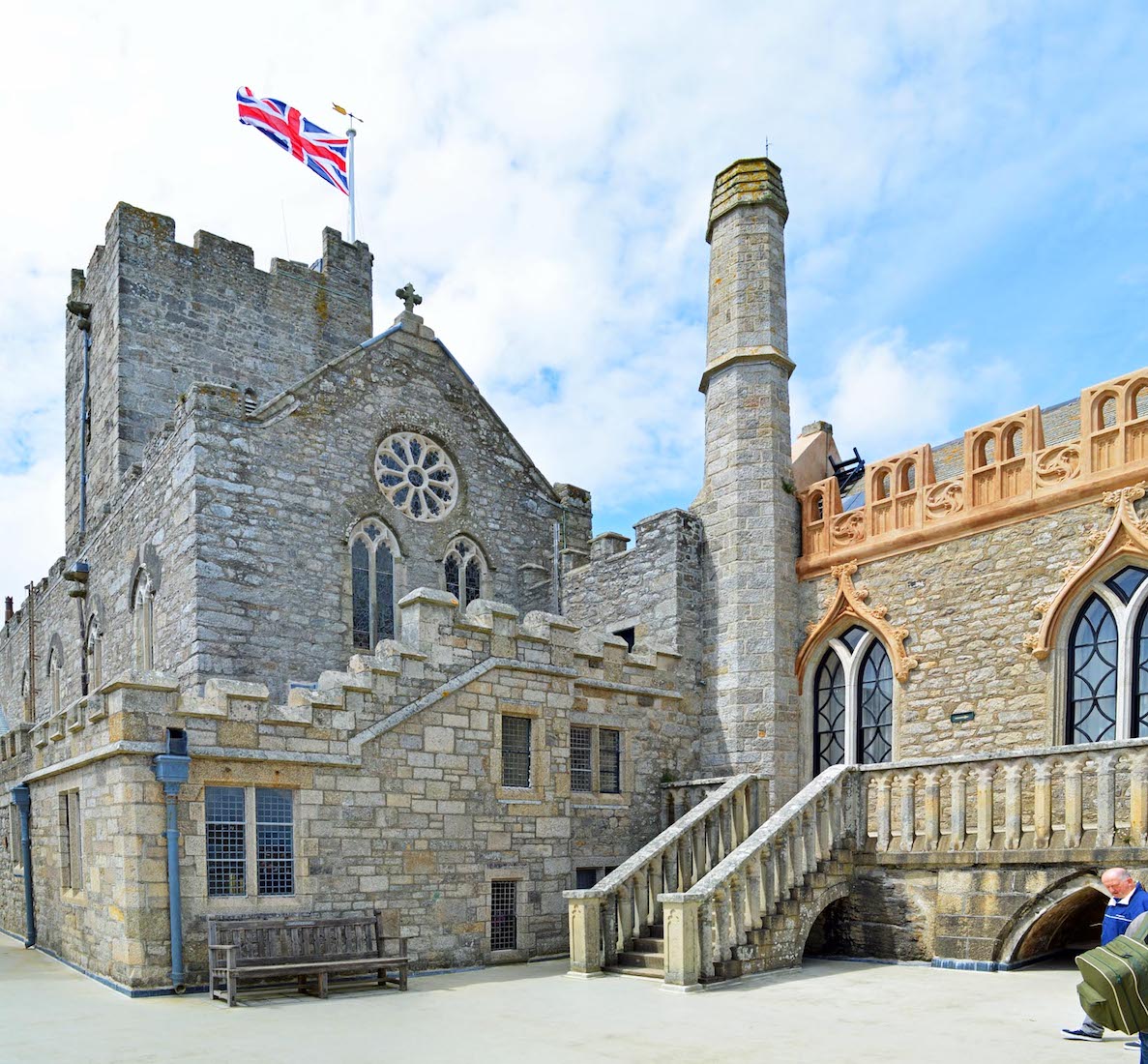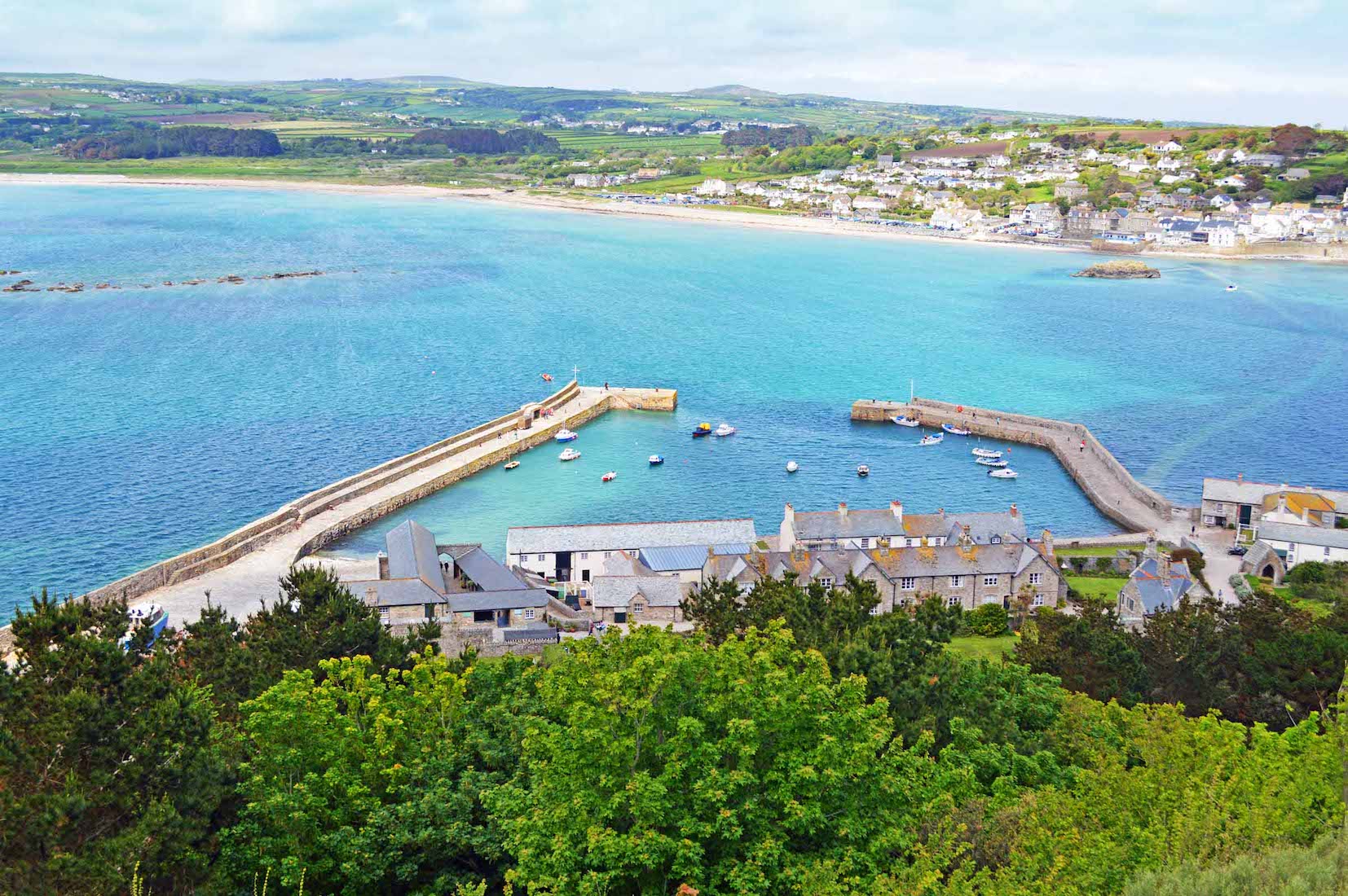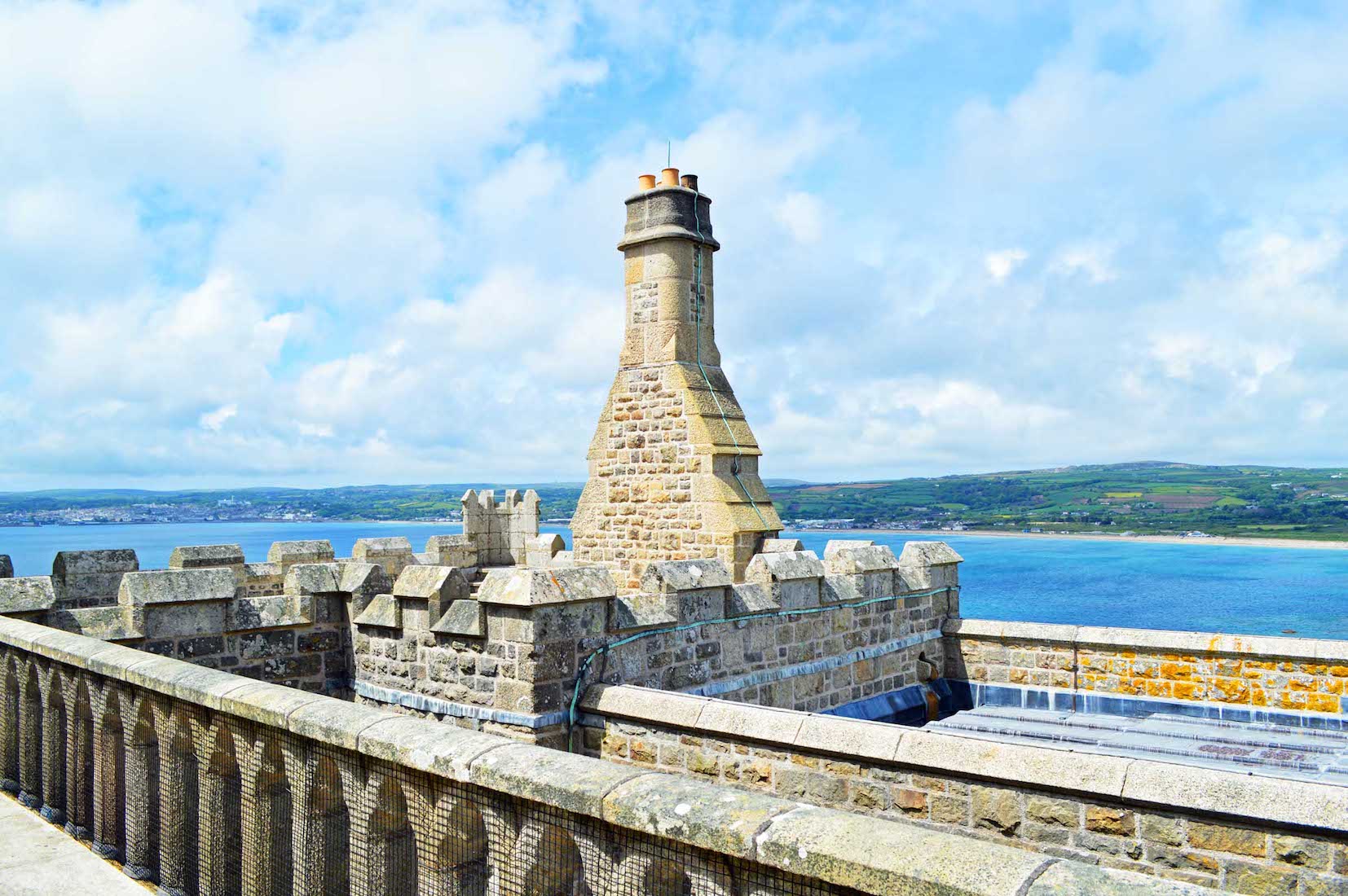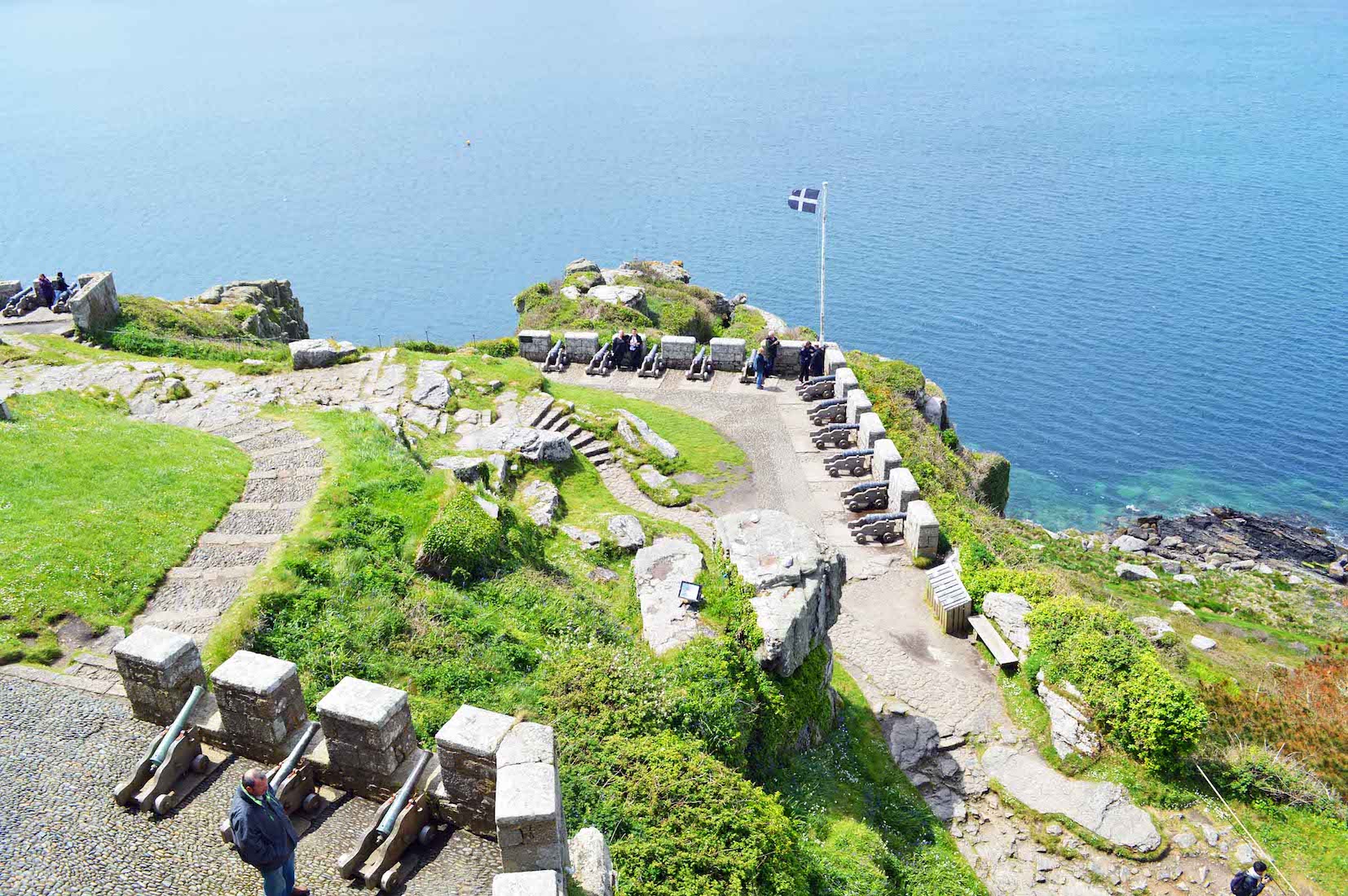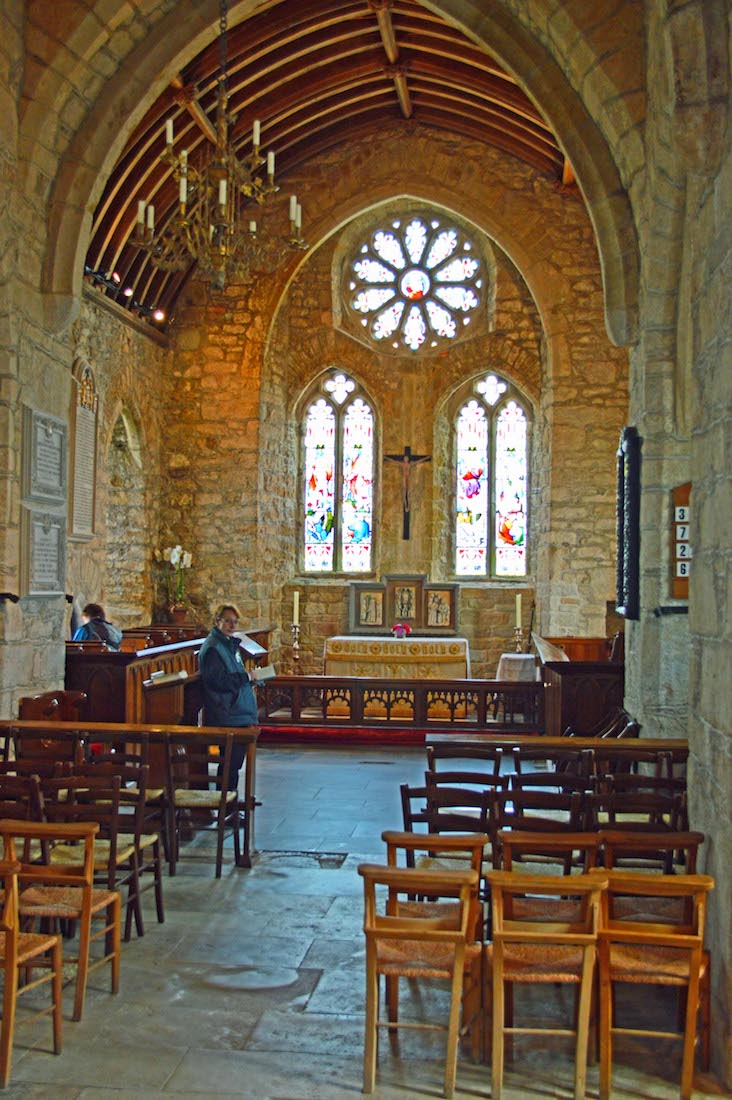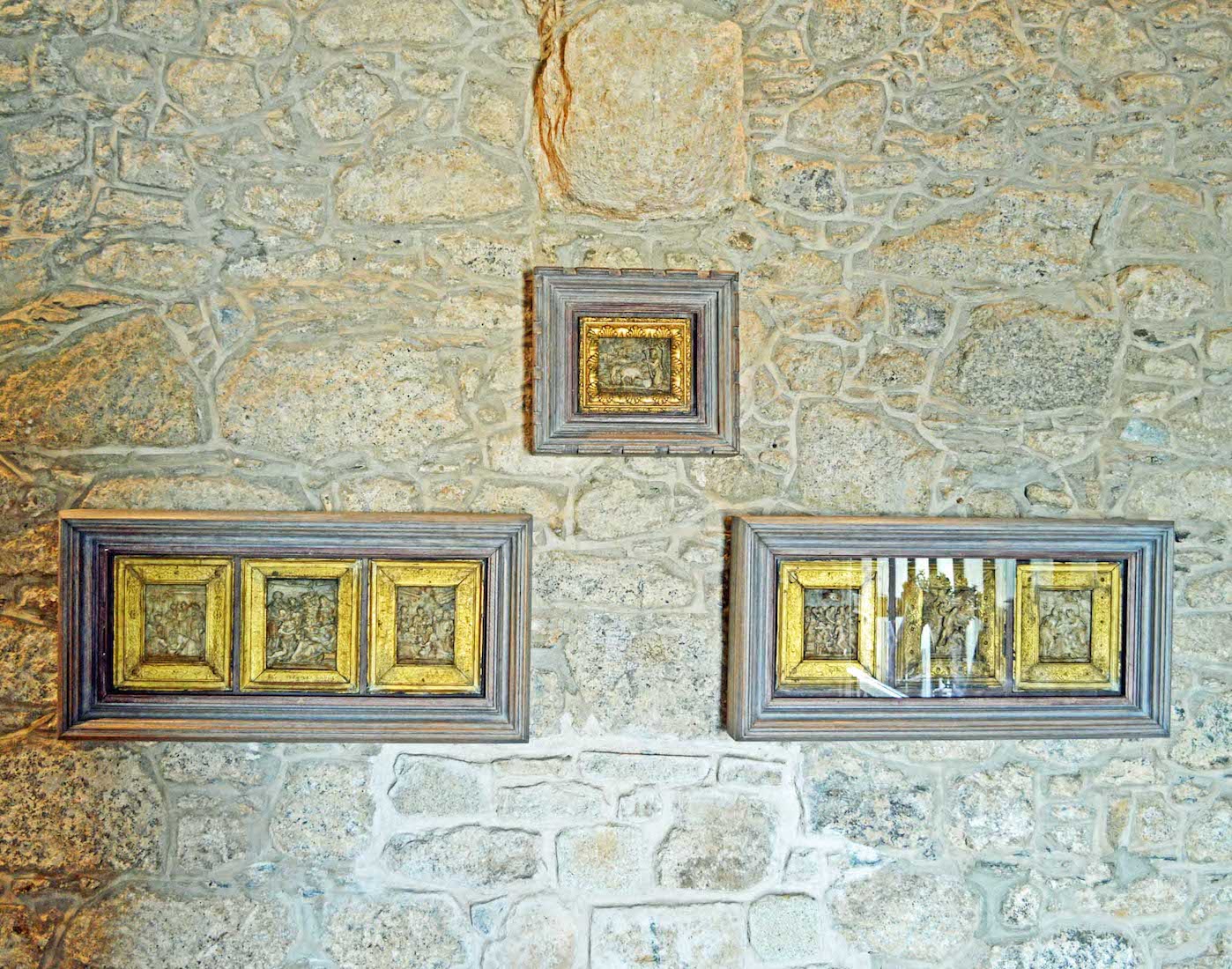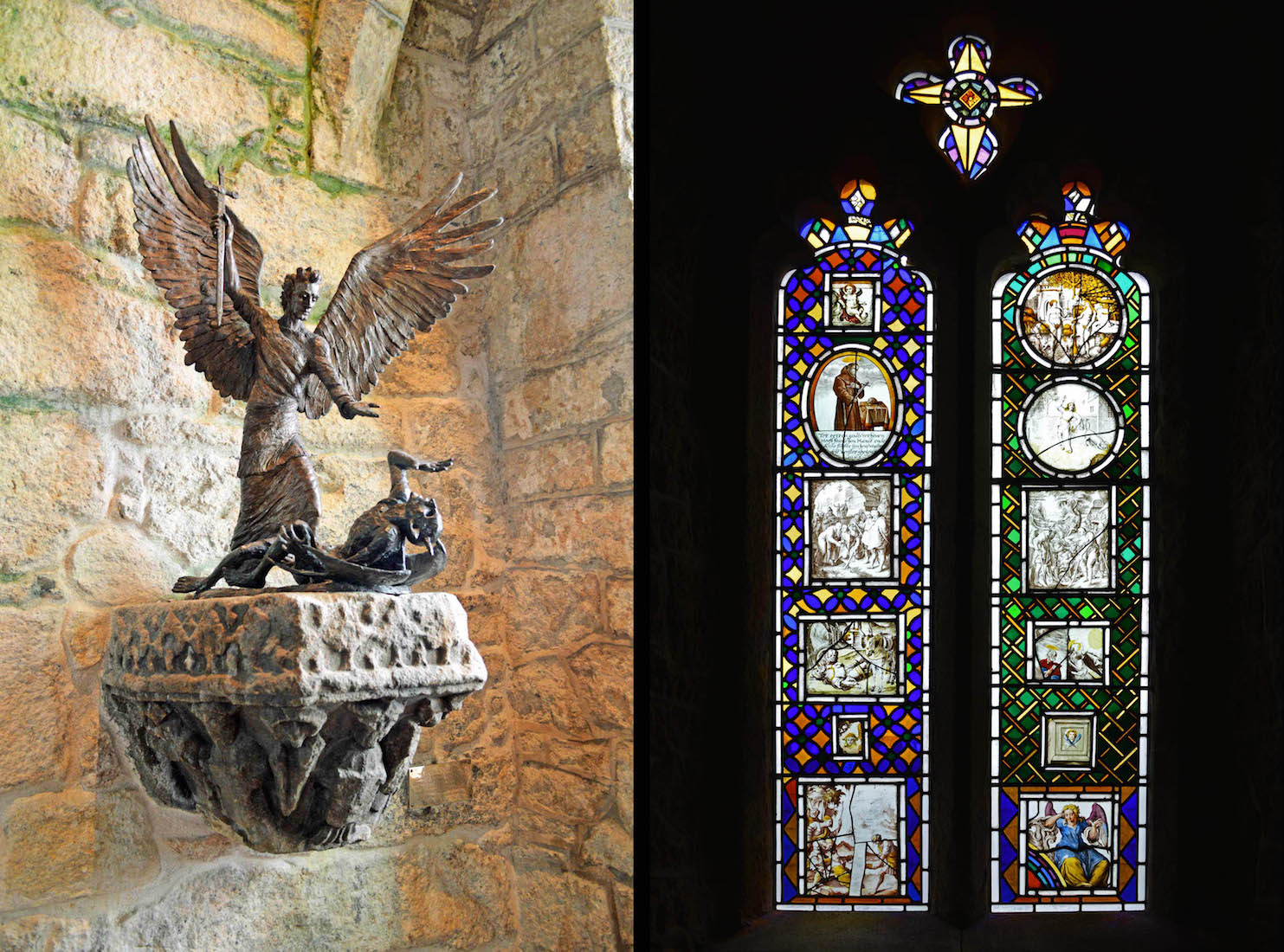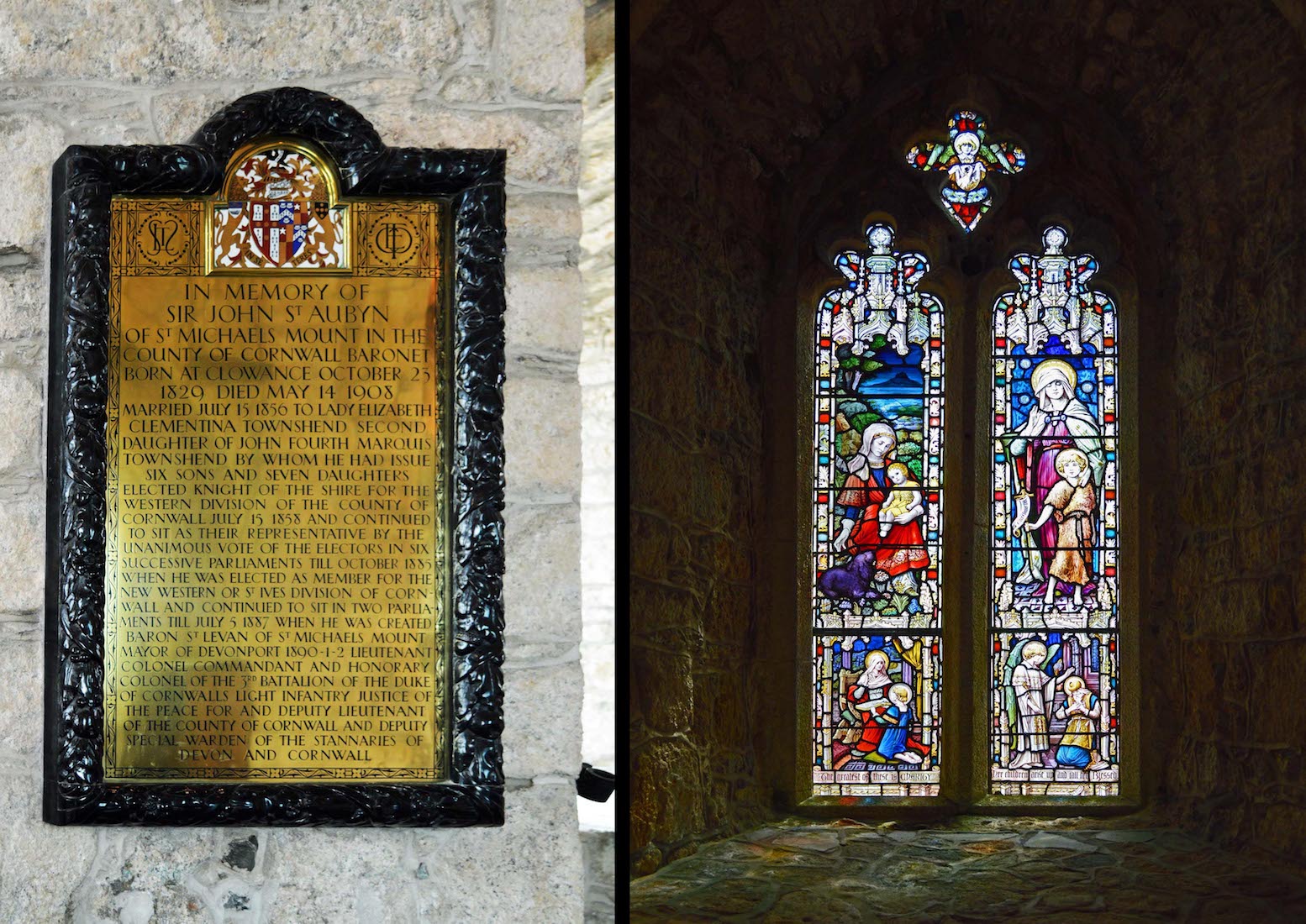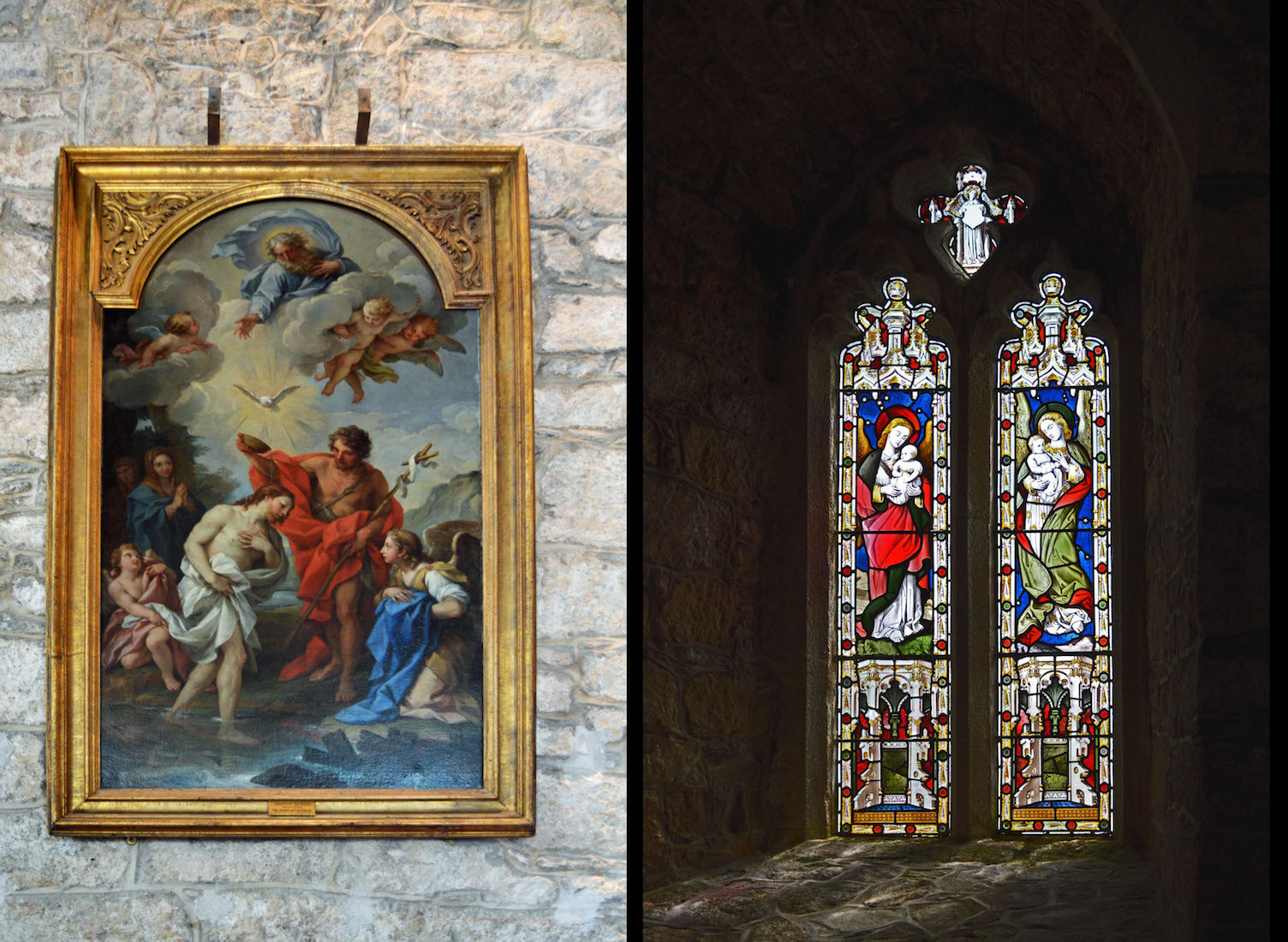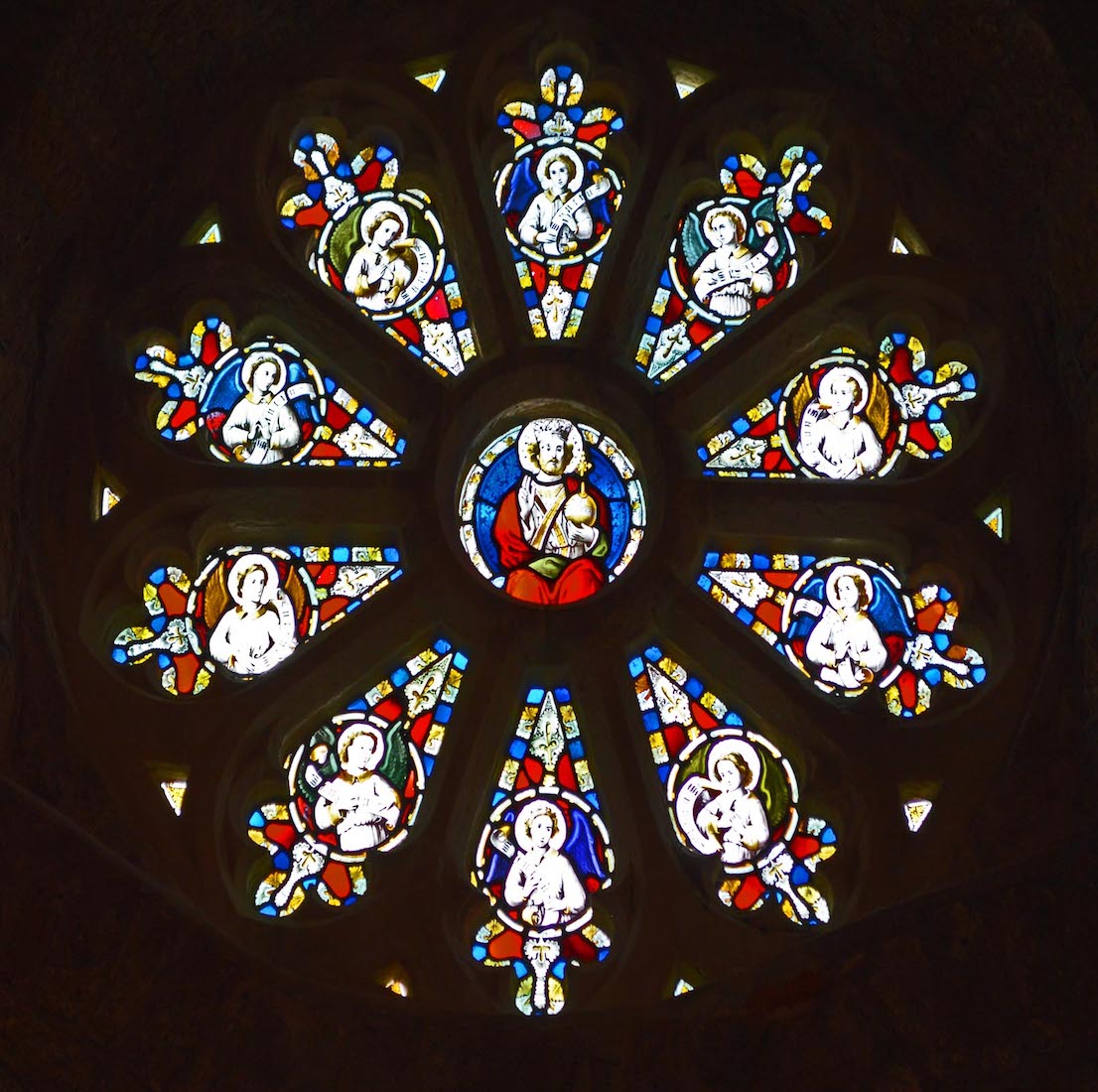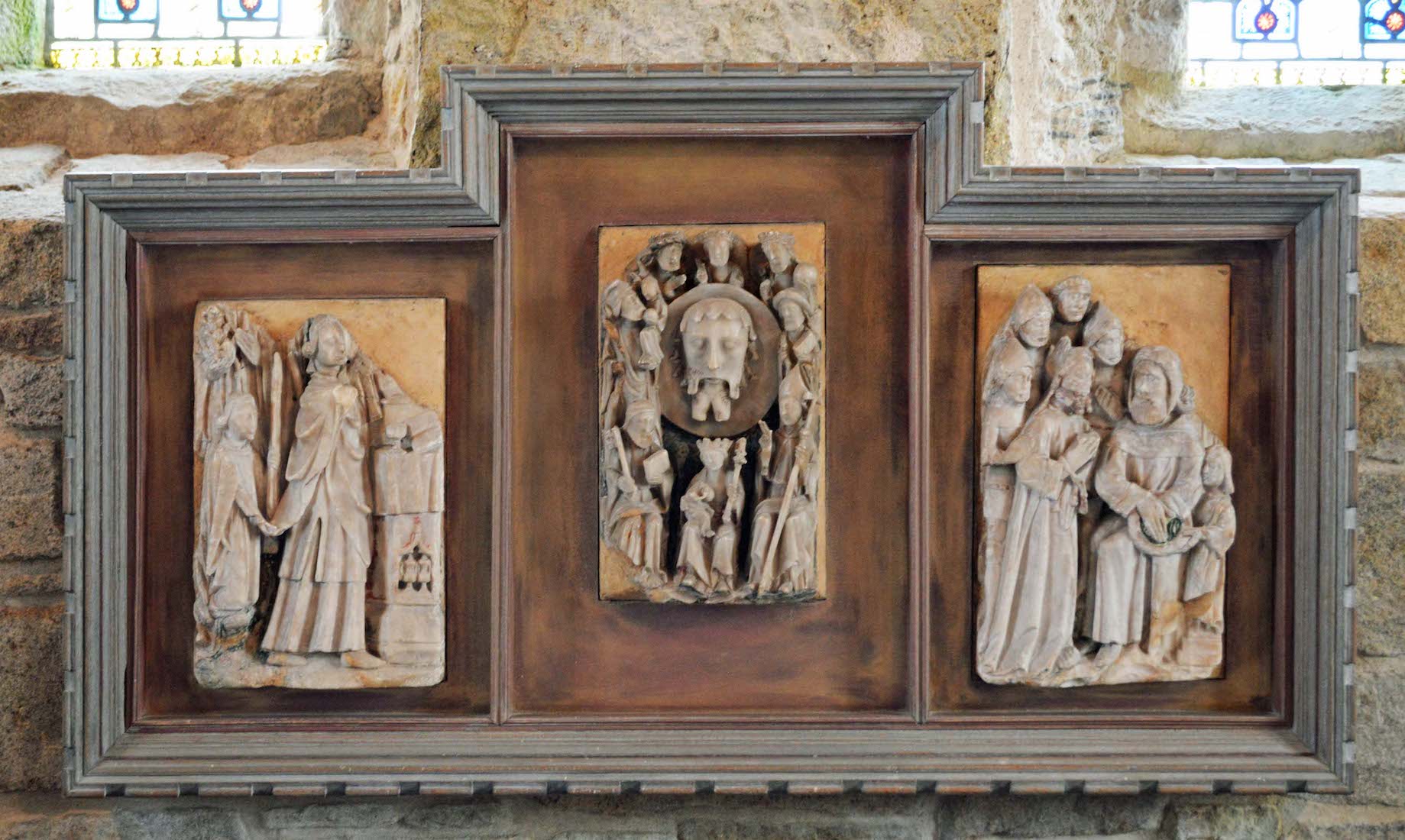
Of more interest is this colourful painting over the fireplace, showing the first Lord St Levan teeing up at Pau in France. Lord St Levan became a keen golfer, and was a founding member of the West Cornwall Golf Club at Lelant, the first club to be established in Cornwall. PLAN
D35. TO THE SOUTH TERRACE

We emerge from the Smoking Room onto the bright and sunny South Terrace. This is the roof of the private East Wing where the St Aubyn family lives.
D36. TURRET
The turret is at the top of the granite spiral staircase which connects all floors of the East Wing.
D37. CASTLE GARDENS
Looking over the south parapet of the South Terrace we gain a marvellous panoramic view out over the Castle gardens to the ocean. There is an almost sheer drop of 200 feet to the gardens below.
D38. WALLED GARDENS
We particularly note the Walled Gardens. These gardens are designed to be seen from above as well as from ground level, and this poses interesting challenges to the gardeners. The Walled Gardens were initiated around 1780 by the four Miss St Aubyns who were sisters of the 5th Sir John.
D39. EAST TERRACES
Earlier, we enjoyed walking down through the East Terraces. They are just as attractive when viewed from up here!
D40. MAINLAND VIEW
We can see across to the mainland past the base of the circular turret.
D41. ROUND THE TURRET
It is possible to walk right around the circular turret. From here we can look northwards to the end of the Mount Blue Room with its curious light brown crenellations.
D42. THE MOUNT CHURCH
Leading up to this level is a set of stone steps, and beyond this we see the end of the Mount Church.
D43. HARBOUR VIEW
Climbing the stone stairs, and walking around the Blue Room, we arrive at the roof North Terrace. From here there is a great view out over the harbour with its sheltering breakwaters. Notice too the causeway showing through at right.
D48. CRENELLATIONS
At the west end of the North Terrace, there is a view out above what was originally the Armoury. We note the large chimney stack and the complicated crenellated stonework parapets.
D45. MY DEFENCES ARE DOWN
Finally, from the west end of the North Terrace we get a view out over the cannon emplacements. We see that these form two distinct sections, and that there is a gully running down the hill between them. This is called Cromwell’s Passage, and is where St Michael is said to have appeared in 495 to warn fishermen off the rocks. St Michael was an important figure in early medieval times.
D46. MOUNT CHURCH
The entrance to the Mount Church opens from the North Terrace. Officially it is the Church of St Michael and All Angels. The original church was built in 1135, and the present building was constructed in the late 14th century, probably using the same stones. In all likelihood there would have been an even earlier church on the summit, but no remains are identifiable.
D47. WALL PLAQUES
These old gold-framed reliefs appear to show scenes from the life of Christ.
D48. BRONZE FIGURE AND SOUTH WINDOW
The modern bronze figure of St Michael defeating Lucifer, yet offering the hand of mercy was made by sculptor Lyn Constable Maxwell. The stained glass windows were probably installed by the 5th Sir John as part of the restoration of the Church in 1811. The panels date from the 15th to 17th centuries. This is the first of three windows on the south wall.
D49. CHURCH PLAQUE AND WINDOW
The brass plaque is in memory of Sir John St Aubyn who died in 1908. These windows in the Church were by the firm of John J. Jennings. Notice the image on the left of the Virgin Mary and Child with the Mount in the background, and the family dog of the time by her side.
D50. CHURCH PAINTING AND WINDOW
The painting of the Baptism of Christ is by Agostino Masucci who lived 1690 – 1765.
D51. WHEEL WINDOW
The wheel window above the altar was installed in 1875. It shows Christ as King and Judge in the centre, surrounded by ten angelic figures.
D52. FURTHER CHURCH WINDOWS
Two more of the colourful stained glass windows ... notice St Michael in action in the left panel.
D53. REREDOS
On the wall behind the altar are three alabaster panels made in Nottingham in the 15th century. The central panel is especially fine, portraying the severed head of John the Baptist on a charger being received in Heaven by the Holy Trinity and assorted saints.


